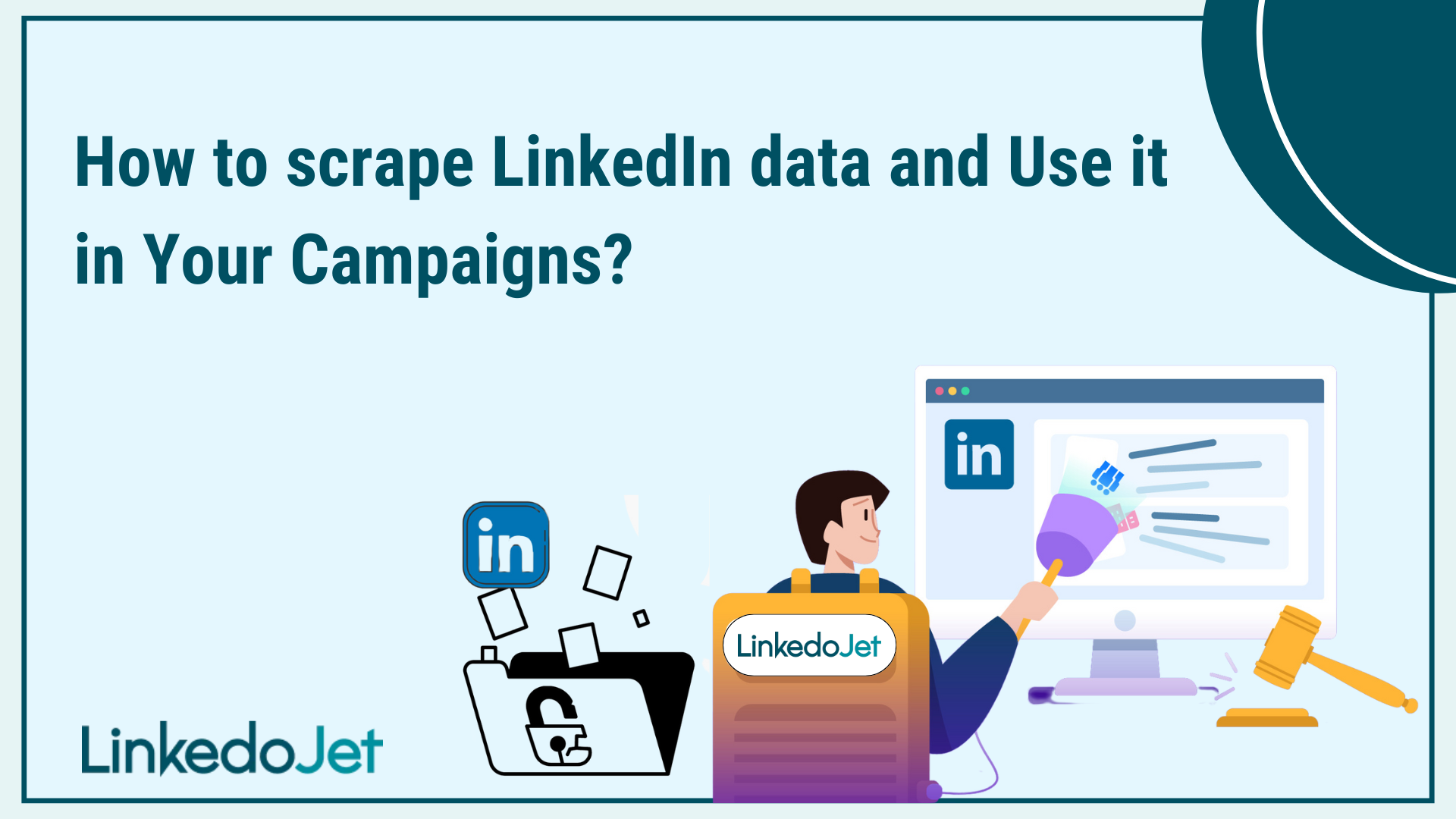Table of Content
- How to scrape LinkedIn data and Use it in Your Campaigns?
- What is LinkedIn Data Scraping?
- The Relevance of LinkedIn Data Scraping in B2B Lead Generation
- Methods of LinkedIn Scraping
- Is LinkedIn Scraping Ethical?
- How to Scrape Data from LinkedIn with LinkedoJet?
- Conclusion
How to scrape LinkedIn data and Use it in Your Campaigns?
Do you know?
It's a fact that by 2025, the world will generate over 463 exabytes of data per day, as predicted by experts. This massive amount of data is equivalent to 212,765,957 DVDs per day or watching "The Social Network" non-stop for 17,878,251 days.
In the year 2023, the world generated approximately 120 zettabytes (ZB) of data. If we break down the numbers, it would amount to roughly 337,080 petabytes (PB) of data created every day. To put this into context, there are approximately 5.35 billion internet users globally, which means that each user generates about 15.87 terabytes (TB) of data per day.
This figure is projected to rise by nearly 19% over the next five years. For businesses, this data pool is a goldmine of information, particularly when it comes to B2B lead generation. One platform that stands out in this regard is LinkedIn. With over 1 billion users, LinkedIn offers a wealth of data for businesses to leverage. But how can businesses effectively scrape this data and utilize it in their campaigns? Let's explore.
What is LinkedIn Data Scraping?
LinkedIn data scraping is the process of extracting data from the LinkedIn platform using automated methods. It can involve scraping data from LinkedIn profiles, groups, and other public areas of the site. The scraped data can include a wide range of information, such as names, job titles, skills, industry, email addresses, education details, and more.
This data can be instrumental in generating leads, predicting market trends, enhancing recruitment efforts, and evaluating company performance.
The Relevance of LinkedIn Data Scraping in B2B Lead Generation
LinkedIn is a treasure trove of data for B2B companies. It is a premier social networking site for professionals and businesses, boasting 90 million senior-level influencers and around 30 million companies.
Given the platform's demographic, LinkedIn scraping can yield valuable results for B2B lead generation. The scraped data can help businesses create targeted lead generation and outreach campaigns, thus fostering connections with potential customers.
Methods of LinkedIn Scraping
There are two primary methods for scraping LinkedIn data:
1. Scraping LinkedIn Profiles
When visiting a public profile on LinkedIn, you can scrape a variety of data, including names, job titles, skills, industry, email addresses, education details, and more. This information can expedite your lead generation efforts and increase their effectiveness.
2. Scraping LinkedIn Groups
LinkedIn groups can be a goldmine of potential customers for any B2B niche. By scraping data from these groups, you can gather information about group members, such as job titles, experience, and current and previous companies. This information can help you build a list of warm leads and personalize your outreach campaigns.
Is LinkedIn Scraping Ethical?
LinkedIn has strict policies against unauthorized data scraping. Automated viewing of LinkedIn profiles, the use of bots to scrape data, and the creation of fake accounts for data scraping are all prohibited.
However, scraping publicly available data on LinkedIn is not illegal or offensive, and you can use such data for your marketing campaigns. The key is to ensure that the scraping is done in a manner that respects user privacy and complies with LinkedIn's terms of service.
How to Scrape Data from LinkedIn with LinkedoJet?
There are several Lead Generation Tools available that can automate the LinkedIn Data scraping process, making it more efficient and effective. One such tool is LinkedoJet.
LinkedoJet only scrapes information that is publicly available on LinkedIn. It can also integrate with third-party applications to provide additional information based on the scraped data.
How to Use Scraped LinkedIn Data?
Once you have scraped data from LinkedIn, you can utilize it in various ways to boost your business. Here are a couple of examples:
1. Personalized Outreach Campaigns
With detailed information about your leads, you can create personalized outreach campaigns. Instead of sending generic emails, you can tailor your messages based on the recipient's skills, experience, awards, and more.
2. Integration with CRM
You can integrate the scraped data into your CRM, allowing you to manage your outreach efforts more effectively. From your CRM's dashboard, you can see who you have reached out to, who has responded, who needs follow-up, and so on.
Conclusion
LinkedIn scraping is a powerful tool for businesses, particularly for B2B lead generation. Tools like LinkedoJet can make the process easier and more efficient, saving you valuable time and resources.
However, it's crucial to remember the ethical considerations and ensure that your scraping activities comply with LinkedIn's terms of service. With the right approach and tools, LinkedIn scraping can be a game-changer for your business.
